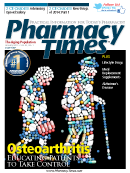Publication
Article
Pharmacy Times
Stroke Risk Increases in Months Following Shingles
Patients with shingles may face a significantly increased risk for stroke in the 6 months after the disease develops, the results of a recent study suggest.
The study, published online on April 2, 2014, in Clinical Infectious Diseases, analyzed the medical records of British patients from 1987 to 2012 and identified over 6500 patients who had incidents of both shingles and stroke. Examining the time at which these patients had experienced a stoke in relation to their development of shingles, the research team found that the stroke rate was 63% higher in the first 4 weeks after a shingles episode, with that risk slowly diminishing over the 6-month period following the episode. This risk was found to be 3 times higher for patients who developed a shingles rash on the skin surrounding their eyes.
The researchers also found that the patients who had been given oral antivirals (about 55% of the individuals identified in the study) had a lower risk for stroke than those who had not. This led the study authors to emphasize the importance of oral antiviral therapy in reducing the stroke risk in shingles patients.
“The relatively low prescribing rates of antiviral therapy in UK general practice after developing shingles need to be improved, as our study suggests that stroke risks following shingles are lower in those treated with oral antiviral therapy compared to individuals not treated with antiviral therapy,” said lead author Sinéad Langan, MD, PhD, in a press release.







